#Surface Mount Serial F-RAM Memory
Explore tagged Tumblr posts
Text
Battery backed Static RAM, Random Access Memory, flip-flop circuit
FM25V05 Series 512 Kb (64 K x 8) 3V Surface Mount Serial F-RAM Memory - SOIC-8
0 notes
Text
Random Access Memory, what is Non Volatile FRAM, Random access memory
FM25CL64B Series 64 kb (8 K x 8) 3.3 V Serial F-RAM Memory - SOIC
#Infineon#FM25CL64B-G#RAM#NVRAM#FRAM (Ferroelectric RAM)#Random Access Memory#what is Non Volatile FRAM#Random access memory#Non volatile FRAM#ram f#f-ram#International#integrated FRAM#Non volatile#Surface Mount Serial F-RAM Memory
1 note
·
View note
Text
What is nvram, Surface Mount Serial F-RAM Memory, memory chips
FM28V202A Series 2 Mb (128 K × 16) 3.6 V F-RAM Memory - TSPO II-44
#Infineon#FM28V202A-TG#RAM#Random Access Memory#NVRAM#FRAM#what is nvram#Surface Mount Serial F-RAM Memory#memory chips#Ferroelectric f-ram memory#non-volatile random-access memory#flash nvram#integrated FRAM#computer memory#flash storage
1 note
·
View note
Text
Basic Comprehensive Guide to Computer Hardware,
for all you beautiful writers or those who just wanna know about computers!
I’m tagging this as sasusaku because of the post I made earlier about helping writers with computer stuff. Hopefully that will help those lovely people find this post and save it as a reference. For your convenience, this long post is under a read more.
This post was made 9th July 2019 and will be updated with more information.
So first of all, we’ve got several major computer components: the Central Processing Unit (CPU),motherboard, main memory (RAM), secondary storage devices (such as an SSD or a hard drive), input and output devices (known as peripherals),and a Power Supply Unit (PSU).
Other important, but nonessential components include: the Graphics Processing Unit (GPU) (a non-embedded GPU), a Uninterruptible Power Supply (UPS), water coolers, wireless network adapters, and extra cooling fans.
The CPU:
The Central Processing Unit is the part of the computer that actually runs programs. It is the most important part of the computer, because without it, the computer cannot run software. When a computer is performing a task that a program tells it to do, we say that the computer is running or executing the program.
How the CPU works:
A computer’s CPU can only understand instructions that are written in machine language. Because it is very difficult to write entire programs in machine language, other programming languages have been invented.
The CPU is designed to perform simple operations on pieces of data. For example, reading data, adding, subtracting, multiplying, dividing, relational operators, etc.,
The CPU understands instructions written in machine language and included in its instruction set. Each brand of CPU has its own instruction set.
In order to perform meaningful calculation, the CPU must perform many operations.
The CPU does nothing on its own, and must be told what to do. That’s why we have programs! A program is nothing more than a list of instructions that cause the CPU to perform operations!
Although a program can be stored on a secondary storage device, it has to be copied into the main memory, or RAM each time the CPU executes it.
The CPU executes a program in a cycle of 3 steps:
Fetch: read the next instruction from memory into CPU.
Decode: the CPU decodes the fetched instruction to determine which operation to perform.
Execute: the CPU performs the operation.
Here’s what my particular CPU looks like:
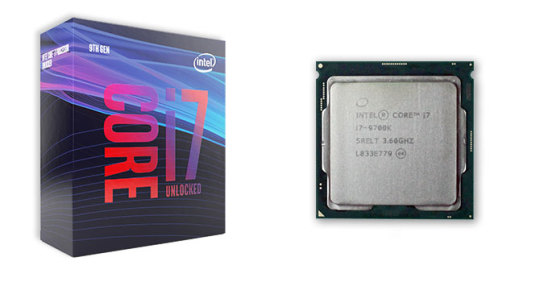
I have the intel i7-9700k processor, which has 8 physical cores. It’s a really good processor! It’s also quite cute. One of my favorite things is that inside my lighting software, iCUE (corsair utility engine) I can see the temperature of all my components, including all 8 cores inside my processor!
Motherboard:
The purpose of the motherboard is to have a central location for all the main components of the computer. Since they’re all mounted/inserted on this board, they can communicate with each other and work together! Sweet!
Here’s what my motherboard looks like, isn’t she cute?
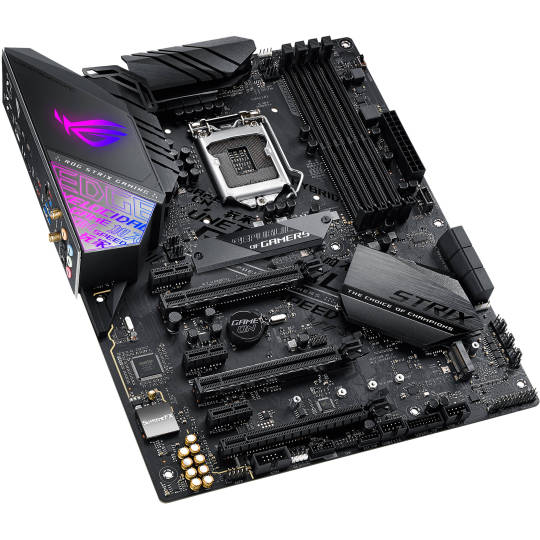
The square in the top middle of the motherboard is the CPU socket! That’s where you mount your CPU. There are lots of different types of sockets for different brands of processors. The 4 channels to the right of that square are the ram channels. The L shaped covers at the top left contain the voltage regulator (my particular motherboard also has a small fan right there to cool it off), and the plates below the CPU are heatsinks. The solid state drives are beneath these heatsinks.
Main Memory (RAM):
The Main Memory, or RAM (which stands for Random Access Memory), is where the computer stores a program and the data used by the program while the program is running.
For example, suppose you’re using a word processor like Microsoft Word to write something. While you are writing, both the word processing program and the piece you’re writing are stored in the main memory.
We call the main memory RAM because the CPU is able to quickly access data stored at any random location in the RAM. RAM is a volatile memory used for temporary storage while the program is running, so the contents of your computer’s RAM will be erased when the computer is turned off. Inside your machine, RAM is stored in chips. It’s really cute!
Here’s my ram:
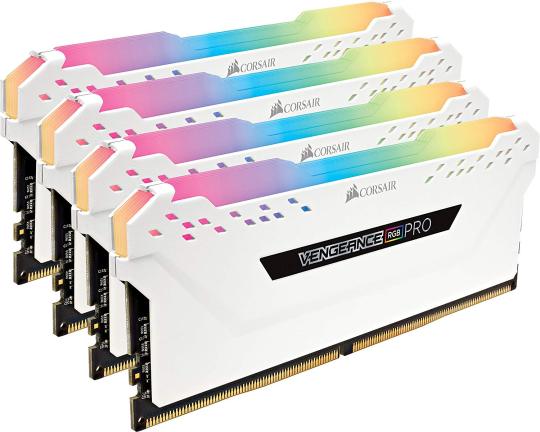
It’s the Corsair Vengeance RGB pro. My particular ram is 4x8, which means I have 4 sticks of RAM, each at 8GB. That means I have 32GB of RAM!
Secondary Storage Devices:
Secondary storage devices are used to hold data for long periods of time. Programs are stored here and then loaded to the main memory when needed.
So, we’ve got several types of secondary storage devices:
Disk Drive: Magnetically encodes data onto a spinning circular disk.
Solid State Drive (SSD): Faster than a disk drive. Has no moving parts, and stores data in solid state memory.
Flash Memory (flash drive, memory stick): Portable, no physical disk. Usually used by connecting it to a computer’s Universal Serial Bus (USB) communication port and appears to the computer as a disk drive, but does not contain a disk.
Optical devices (compact disk (CDs), digital versatile disk (DVDs)): Data is encoded optically as a series of pits on the disk surface. CD and DVD drives use a laser to detect the pits in order to read the encoded data. Optical disks hold large amounts of data, and for that reason, recordable CD and DVD drives are commonly used for creating backup copies of data.
Here are my SSDs, (solid state drives):
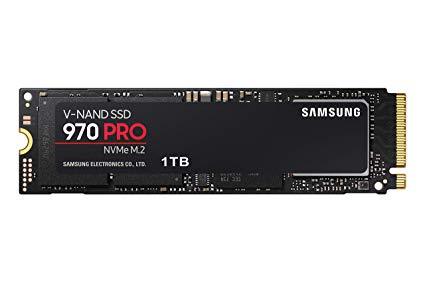
I have 2 of these Samsung 970 pros under the heatsinks of my motherboard, both 1 TB each. They’re a lot faster than a hard drive because they don’t have any physical moving parts. They’re also a lot smaller and cuter!
Graphics Processing Unit (GPU):
The GPU is designed to rapidly manipulate and alter memory in order to accelerate the creation of images. They can either be embedded in the motherboard (like most laptops or low-tier desktops) or be on a video card.
So pretty much, your GPU does a lot of arithmetic! It’s very powerful and necessary for playing heavy games or editing videos.
Here’s my GPU:
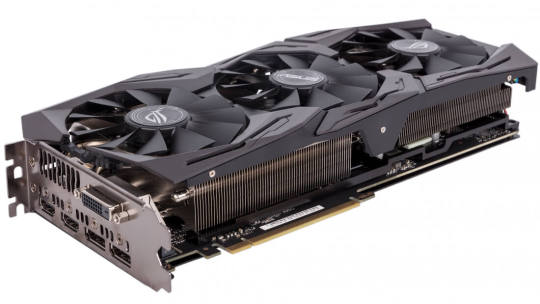
This is the ASUS GTX 1080 ROG STIX RGB GPU. Lots of acronyms there, but she’s really cute! She has 3 fans to keep her cool while I’m playing Skyrim and Ultimate Ninja Storm 4. She’s also got some HDMI ports and stuff on the back there. That’s how you connect your monitor or VR to her!
So a lot of you have heard of the GPU hype lately, I’m sure. So, there’s a couple types of GPUs.
TI: stands for titanium, and just means that it’s more powerful than the graphics card without it. So the ASUS GTX 1080 TI ROG STRIX RGB is more powerful than my GPU, the ASUS GTX 1080 ROG STRIX RGB. The TI versions of graphics cards have more shader processors (cores and shit) that are able to carry out specialized processing and rendering tasks that are required for your computer to display stuff on your monitor.
GTX: nobody really knows? Grand Tourismo Xtreme? Graphics Technology Xtreme? Sounds cool though.
RTX: Ray Tracing! Ray tracing is a rendering technique that can produce incredibly realistic lighting effects. Basically, an algorithm can trace the path of light, and then simulate the way that the light would react with the virtual objects it hits in the generated world.
Cooling Systems:
So, there’s a lot to unpack here. You can do mineral oil (submerge your entire computer in a fish tank of mineral oil! No thanks, that sounds really inconvenient for maintenance.) regular fans, water cooled, and I’m sure there’s much more shit I haven’t even heard of. Today we’ll be talking about fans and water cooling.
Fans: lots of different kinds. They spin to cool your computer down!
Tip: When cleaning your fans on your computer, you need to hold your fans still. When they spin, they generate power to the motherboard (think of it like a computer windmill) and can cause it to overheat and get messed up. A lot of people like to clean their fans using compressed air for convenience, but if you let the blades spin freely while you’re blowing air at them, they will generate too much electricity for the motherboard to handle.
There’s many kinds of fans, like SP (static pressure), AF (airflow), and ML (magnetic levitation). There’s a lot more that I haven’t really studied. I personally like my ML fans because they’re pretty and super quiet!
Water Coolers:
Water coolers take advantage of the basic principle of thermodynamics- heat moves warmer objects to cooler objects. As the cooler object gets warming, the warmer object gets cooler.
https://www.youtube.com/watch?v=gQ1lNwCKs-c
This wonderful youtube video bu Tao of Tech does a really fantastic job of explaining. I feel that the visuals he produces are much more effective than my typing.
This is my water cooler, the Corsair H150i Pro.
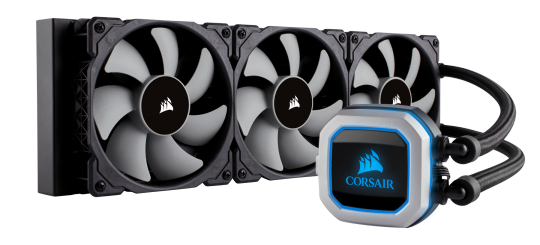
The block with the Corsair logo is referred to as the water block or the CPU block. This sits directly on the CPU on top of the motherboard. The fans sit on top of the radiator at the front of my case, although it’s possible to mount your radiator and fans in the top of the case as well.
There are two types of water coolers: AIO and Custom.
AIO stands for all in one. The water cooler above is an AIO loop. The water inside does not need to be changed because it’s a closed loop! I love my water cooler because there’s a lot less maintenance on it than using a custom loop!
A Custom loop consists of larger tubes, a reservoir, and a pump. You need to replace the water inside it every so often (I’d say like 6-8 months but I have friends who have left it in there for years). The tubes and all have to be cleaned out, and the custom loops are quite bulky. However, it makes it very easy to liquid cool both your GPU and CPU simultaneously and can in some cases be more efficient than an AIO loop. You really need to know what you’re doing when you build a custom water cooling loop, but they can look super cool and perform really really well.
One popular brand of cooling fluid (my computer science friends and I lovingly call it computer water, the forbidden drink) is thermaltake. There’s lots of different colors for you to customize your system!
Here’s an interesting video from JayzTwoCents on his custom loop with 2 year old fluid! He drains his system in this video. It’s pretty sweet.
https://www.youtube.com/watch?v=W8wwxGPGApU
I HIGHLY recommend JayzTwoCents if you want to know more about building PCs!
Input Devices:
Input is data that the computer collects from devices. An input device is a component that collects data, usually from the end user (you!) For example, keyboards, mice, touchscreens, and cameras are all input devices.
Disk drives can be considered input devices because programs and devices are retrieved from them and then loaded into the computer’s main memory.
Output Devices:
Output is data produced by the computer for people or devices. This data can be text, image, audio, or bit stream. An output device formats and presents output. This may be a video display (your monitor, or screen), or a printer.
Disk drives and USB drives can be considered output devices because data is sent to them to be saved.
Here’s my machine. Try to identify which parts are which!
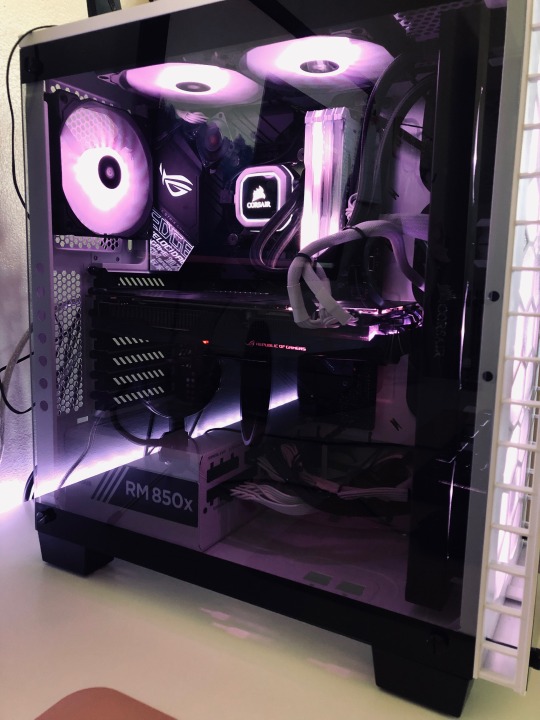
#audrey's life#computer science shit#reference#for writers#tagging this as sasusaku so my favs can find it#sasusaku
8 notes
·
View notes